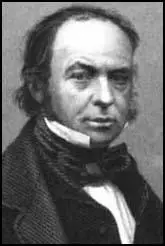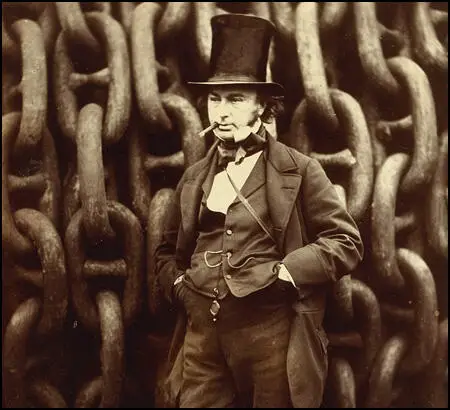Isambard Kingdom Brunel

Isambard Kingdom Brunel, the only son of the French civil engineer, Sir Marc Brunel, was born in Portsmouth on 9th April, 1806. He was educated at Hove, near Brighton and the Henri Quatre in Paris. In 1823 Brunel went to work with his father on the building of the Thames Tunnel. He was later to be appointed as resident engineer at the site.
In 1829 Brunel designed a suspension bridge to cross the River Avon at Clifton. His original design was rejected on the advice of Thomas Telford, but an improved version was accepted but the project had to be abandoned because of a lack of funds.
After being appointed chief engineer at the Bristol Docks in 1831, Brunel designed the Monkwearmouth Docks. He later went on to design and build similar docks at Plymouth, Cardiff, Brentford and Milford Haven.
In March 1833, the 27 year old Isambard Brunel was appointed chief engineer of the Great Western Railway. His work on the line that linked London to Bristol, helped to establish Brunel as one of the world's leading engineers. Impressive achievements on the route included the viaducts at Hanwell and Chippenham, the Maidenhead Bridge, the Box Tunnel and the Bristol Temple Meads Station. Controversially, Brunel used the broad gauge (2.2 m) instead of the standard gauge (1.55m) on the line. This created problems as passengers had to transfer trains at places such as Gloucester where the two gauges met.
Brunel persuaded the Great Western Railway Company to let him build a steam boat to travel from Bristol to New York. The Great Western made its first voyage to New York in 1838. At that time the largest steamship in existence was 208 feet long, whereas the Great Western was 236 feet long. The journey to America took fifteen days and over the next eight years made 60 crossings.

The next steamship that Brunel built in Bristol was the Great Britain. It had an iron hull and was fitted with a propeller with six blades. The Great Britain was designed to carry 250 passengers, 130 crew and 1,200 tonnes of cargo. She made her first voyage from Liverpool to New York in 1845.
In 1852 Isambard Kingdom Brunel was employed by the Eastern Steam Navigation Company to build another steamship, the Great Eastern. Built on the Thames, the ship had an iron hull and two paddle wheels. The Great Eastern was extremely large and was designed to carry 4,000 passengers. Brunel was faced with a series of difficult engineering problems to overcome on this project and the strain of the work began to affect his health. While watching the Great Eastern in her trials, Brunel suffered a seizure. He died on 15th September, 1859 and was buried at Kensal Green cemetery five days later.

